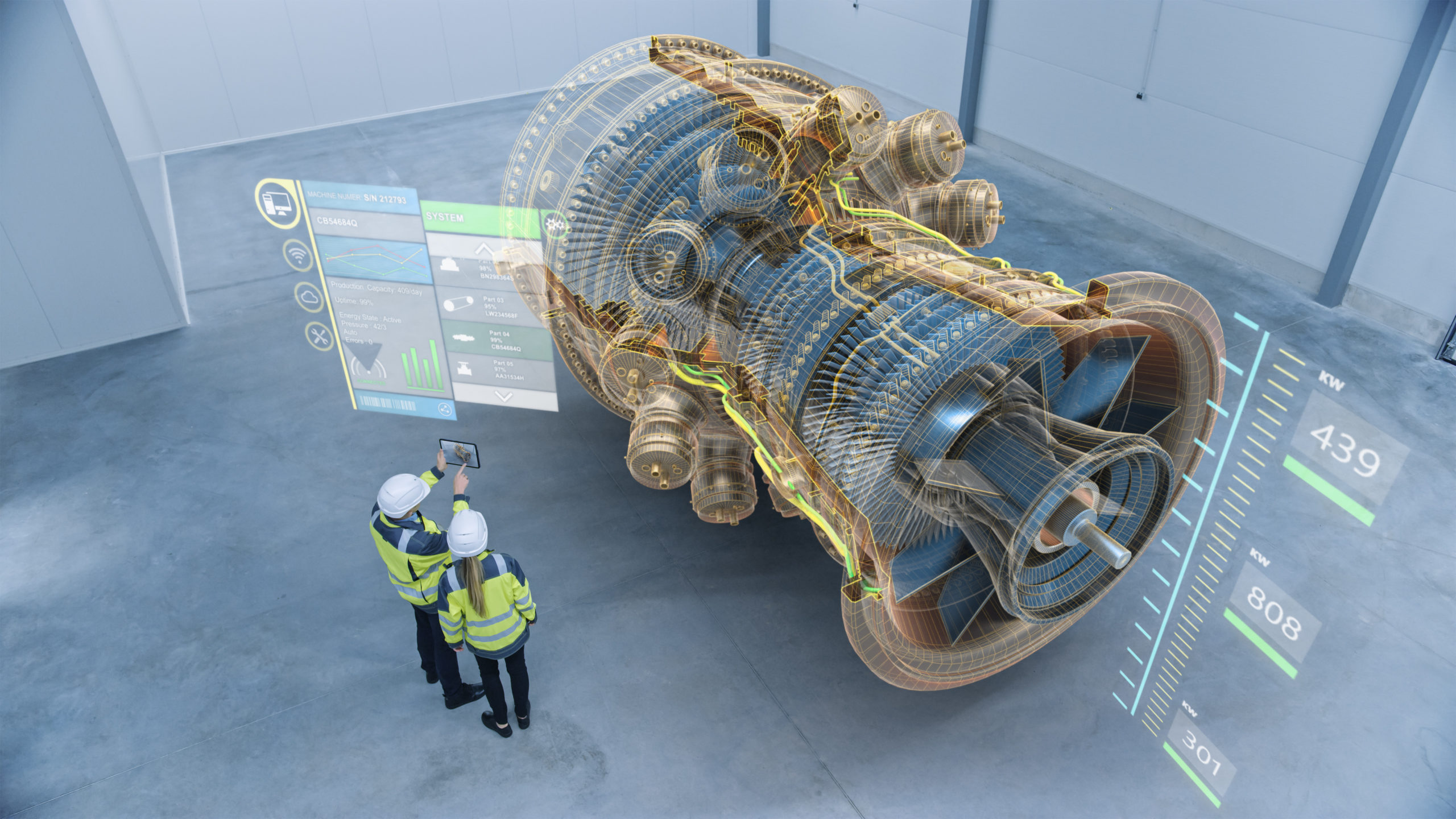
Simulations are rife in the modern world. From the design of components for an aeroplane to the movement of people in a crowded space, simulation is finding highly diverse application across many technical fields. The European Patent Office (EPO) treats simulations per se as inherently non-technical meaning that a European patent cannot be obtained for a simulation itself in the absence of any technical context. However, an invention that makes use of a simulation in a technical context can, in principle, be the subject of a granted European patent.
In addition to asking whether a simulation can be patented, time is also well spent building a commercial justification for pursuing patent protection and an accompanying patent filing strategy that supports this. It is of course worthwhile considering this in any technical field but there are additional nuances in the case of a simulation invention as discussed in more detail later in this article.
When considering whether to patent a simulation, key questions to ask include:
- Is your simulation used in the context of a technical system?
- How does the simulation fit into your product or service – is it single use or repeat use, for example?
- How difficult would it be to detect use of your simulation by a competitor?
- Where does your simulation execute – on a customer terminal or a proprietary server, and in which countries?
The answers to these questions are typically highly informative in determining whether a simulation can and should be patented. Moreover, a commercially focussed patent filing strategy can be developed within this framework ensuring that you get a good return for your investment of filing a patent application.
These points and others are covered in our fixed-price Innovation Capture Sessions – click here for further information.
Can your simulation be patented?
This is an interesting question because the answer itself – yes, in some cases – is relatively straightforward. The difficulty comes in mapping the answer to the actual invention at hand.
The EPO requires inventions in all technical fields to possess technical character before awarding a granted patent. In many technical fields the technical character of the invention is intrinsic but in simulation this is not the case. The EPO treats simulations as mathematical methods which are a class of non-technical entity according to the European Patent Convention. Technical character is therefore not intrinsic to a simulation, but instead must be gained by applying the simulation in a technical context.
This seems simple enough because on the face of it one can simply ask whether a technical item or technical process is being simulated to determine whether the simulation gains the necessary technical character for it to have a chance of being the subject of a granted European patent.
The logical next question is of course ‘what is technical?’ Here is where the complexity lies as there is no exhaustive list of technical items to consult, meaning that an applicant is in the position of having to predict whether the particular context that their simulation is being used within will be considered technical by the EPO. In some cases, this is relatively clear, but in others it is not. There is no hard and fast rule for this and in practice, the ability to accurately predict whether something will be considered technical by the EPO is one that is developed over time through exposure to feedback from EPO examiners and case law.
Additionally, even if the simulation is used in a technical context, this is not going to result in the EPO considering it to have technical character unless this point is captured and expressed very clearly in the patent application itself. Recent EPO decision G1/19 makes clear that the use of an ‘outcome’ of the simulation in a technical context must at least be implicit in the claims of the patent for a technical effect to be present. It is usually very difficult if not impossible to adapt a patent application drafted to a simulation invention that does not suit European practice from the outset owing to the prohibition on adding subject matter, meaning that it is critical to get the framing of the invention right at the drafting stage.
Consider the example of a simulation that assists in the detection of profiles operated by bots on a social networking site. This hypothetical simulation operates by simulating interactions between profiles operated by genuine people using the site to enable the characteristics of such interactions to be determined. The output of the simulation can then be compared with real traffic on a social networking site to spot outliers that may be attributable to bots.
This invention could be framed as a simulation of human interaction on a social networking site. This framing would likely trigger the EPO to raise issues relating to technical character, as using the ‘notional business person’ test the EPO would likely say that the rules for defining what human interaction looks like on a social networking site come from a human behavioural specialist operating in the non-technical field of human social behaviour analysis.
On the other hand, the invention could alternatively be framed as the simulation of traffic over a computer network. A first class of traffic corresponding to entities authorised to access the network and a second class of traffic corresponding to entities not authorised to access the network could be defined, with these classes respectively corresponding to the human users and bots. This framing is less likely to trigger a non-technical subject matter issue from the EPO because in this case the rules relate to flow of traffic over a computer network, originating from a network engineer operating in the technical field of computer network analysis. Human behaviour is more removed from the kernel of the invention in this alternative framing.
The importance of appropriate framing of the invention should therefore be clear from this hypothetical example. Additionally, framing the invention appropriately tends to naturally lead to a focus on details of the invention that will assist with the technical subject matter during the patent application drafting process, further increasing the chances of obtaining a granted patent from the EPO.
Finally, it would not be correct to discuss this topic without at least a brief mention of the very recent decision from the EPO’s Enlarged Board of Appeal on this subject, G1/19. The decision has changed the relevance of some earlier case law from the EPO in this area but the core point remains the same: simulations having outcomes that are used in a technical context will remain patentable.
Should your simulation be patented?
Clearly, the process of applying for a patent will consume time and money from your organisation. Therefore, you want to be sure that these resources are well spent. In addition to the usual considerations surrounding the decision to apply for a patent, a simulation invention introduces a few additional complexities into this assessment.
Firstly there is the question of the nature of the use of the simulation. In some cases, such as where a simulation is being used as a tool in the design of a component, once the design of the component has been finalised there is no further need of the simulation. A patent covering this use of the simulation may therefore be of lower value in such circumstances. The valuation may however increase in the case where the innovative aspect of the simulation is broadly applicable to component design – for example, a simulation that better approximates the interaction of flowing fluid with a solid object would have application in the design of many vehicle components at least. It is important to identify the inventive concept clearly in the case of a simulation invention so that the potential scope for application of the simulation can be properly appreciated. This goes hand in hand with considering the way in which the simulation would be used in practice, both of which feed into the decision as to whether to go ahead with filing a patent application.
Secondly there is the question of detectability which asks how easy it would be to detect use of your invention by competitors. In the example of component design the simulation is likely to be used in a proprietary environment only, making it relatively difficult to detect use by a competitor. In other cases the simulation may form part of a distributed software product, potentially making competitor use easier to spot. In the middle of these two is a software as a service-type model where the simulation is used by end users remotely. The effort that would be involved in determining whether a competitor is truly using your invention is also worth considering – would it involve reverse engineering of competitor software or simply use of their software, for example. These considerations should also be weighed against the passive deterrent value that a patent application provides – others may see that you are seeking patent protection and be deterred from competing simply to minimise their risk.
Thirdly there is the question of location. Patents are territorial rights meaning that they cover only the jurisdiction in which they were granted. It is common for simulations to be hosted in the Cloud, meaning that, for example, an end user in the UK could make use of a simulation hosted by your competitor in a US data centre. In that case it may be possible to take action against the UK-based end user under a UK patent, but this is unlikely to be the highest-value target as one would likely wish to tackle the competitor directly. A US patent that the competitor directly infringes may therefore be the better option in this circumstance. More generally, patents in multiple jurisdictions may be required to obtain robust protection for a simulation invention. This has a direct impact on the total cost of obtaining patent protection and hence should be considered at the outset.
Conclusion
The considerations involved in the patenting a simulation at the EPO are numerous and are such that it is difficult to adapt an application to make it suitable for grant by the EPO after it has been filed. It is therefore worth seeking input from a European patent attorney at the patent application drafting stage to ensure that your application is fit for prosecution at the EPO. This is also the ideal time to sanity check the patent filing decision itself by assessing the potential value of a granted patent covering the simulation, and also to formulate a robust filing strategy.
We combine all three of these aspects in our fixed-price Innovation Capture Sessions – click here for further information.
If you would like information on how to protect your company’s innovation or have any questions in relation to this article, please find my contact details on my website profile here or contact us at gje@gje.com.
GJE Review: Simulations
GJE’s computer technology team have put together a comprehensive collection of content designed to equip your business with insight into simulations and the role intellectual property has in its development. To view the full collection, click here.





